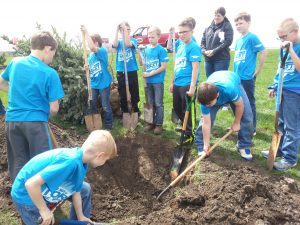 In 1854, J. Sterling Morton, a prominent newspaper editor and publisher, moved from Detroit to the area that is now Nebraska. He and other pioneers noticed a lack of trees, which were needed to act as windbreaks to stabilize the soil and to give shade from the sun. Morton planted many trees around his own home and encouraged others to do the same.
In 1854, J. Sterling Morton, a prominent newspaper editor and publisher, moved from Detroit to the area that is now Nebraska. He and other pioneers noticed a lack of trees, which were needed to act as windbreaks to stabilize the soil and to give shade from the sun. Morton planted many trees around his own home and encouraged others to do the same.
Month: April 2017
New Tree City USA designees
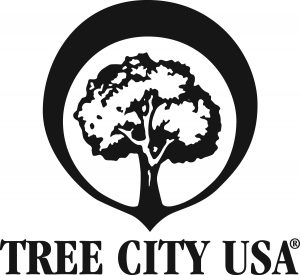 Congratulations to Wisconsin’s newest Tree City USA designees – Gays Mills, Milton, Mukwonago, and Stratford. The Tree City USA program, sponsored by the Arbor Day Foundation and administered in Wisconsin by the DNR, provides communities with a tangible goal and national recognition for their community forestry efforts.
Congratulations to Wisconsin’s newest Tree City USA designees – Gays Mills, Milton, Mukwonago, and Stratford. The Tree City USA program, sponsored by the Arbor Day Foundation and administered in Wisconsin by the DNR, provides communities with a tangible goal and national recognition for their community forestry efforts.
April showers: urban forests improve water
Urban forestry programs and community trees provide many benefits to the individuals and families who inhabit those areas: improved mental health, increased energy savings, cleaner air and beauty. Another benefit of urban trees, and perhaps a lesser-known benefit, is better water quality. Continue reading “April showers: urban forests improve water”
Lesser celandine is an emerging threat to Wisconsin forests – be on the lookout.
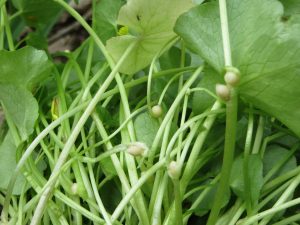
Spherical bulbils of lesser celandine form during the spring growing season. Later they drop off and sprout to form new plants.
Lesser celandine (Ranunculus ficaria), also known as fig buttercup, is a ground layer plant and an aggressive invader of forests in North America. So far, it is relatively unknown in Wisconsin but has been found in the southeastern part of the state, especially in moist (mesic and wet-mesic) forests and along river banks.
Lesser celandine is a spring ephemeral that emerges in early spring, develops flowers, dies back by early summer, and remains dormant in underground tubers. During the short growing period the plant produces bulbils which sprout and give rise to new plants. After the round bulbils drop off they are spread by gravity, water, small animals, and like the tubers, transported when soil is moved. Continue reading “Lesser celandine is an emerging threat to Wisconsin forests – be on the lookout.”
Wildfire activity increases; DNR ready for the battle
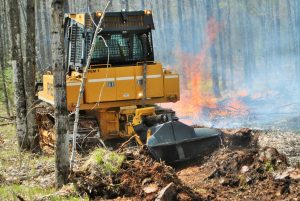 Wisconsin has already had more than 200 wildfires in 2017 since the snow-cover disappeared with the potential of more before vegetation greens up and the fire danger subsides.
Wisconsin has already had more than 200 wildfires in 2017 since the snow-cover disappeared with the potential of more before vegetation greens up and the fire danger subsides.
More than 98 percent of all wildfires in Wisconsin are caused by people. The majority of these fires result from careless burning of debris on the ground in piles or burn barrels. Something as simple as getting a burning permit or being aware of the daily fire danger can prevent a wildfire.
Find out which counties have suspended burning permits and witness real-time fire activity by visiting dnr.wi.gov and enter keyword “fire.” To see the DNR fire control ‘gearing up for fire season,’ visit the DNR homepage and watch the short video of all the efforts it takes protect Wisconsin’s valuable resources.
Read more in this news release or contact Wildfire Prevention Specialist Catherine Koele (catherine.koele@wisconsin.gov), 715-356-5211 x208 (office), 608-219-9075 (cell).
DNR shipping trees; last chance to purchase seedlings
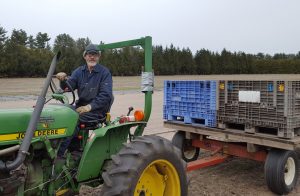
DNR’s reforestation program is busy harvesting seedlings from our nursery fields and shipping them to woodland owners throughout the state. If you own forest land in Wisconsin and still need seedlings for planting this spring, contact Carey Skerven (carey.skerven@wisconsin.gov) as soon as possible or call the Wilson Nursery (608-375-4123) in Boscobel or the Griffith Nursery (715-424-3700) in Wisconsin Rapids. We will do our best to fill your orders. Here are the species still available as of April 3:
Conifers: Jack pine 1-0, red pine 2-0, white pine 2-0, tamarack 2-0, and white cedar 3-0.
Hardwoods: Aspen 1-0, river birch 2-0, butternut 1-0, black cherry 1-0 and 2-0, hackberry 1-0, bitternut hickory 2-0, shagbark hickory 3-0, hard maple 2-0, red maple 2-0, silver maple 1-0 and 2-0, red oak 2-0, and black walnut 1-0.
Shrubs: Chokecherry 1-0, ninebark 1-0, and American plum 1-0.
For more information, contact Jeremiah Auer at (715) 459-1999 or jeremiah.auer@wisconsin.gov
